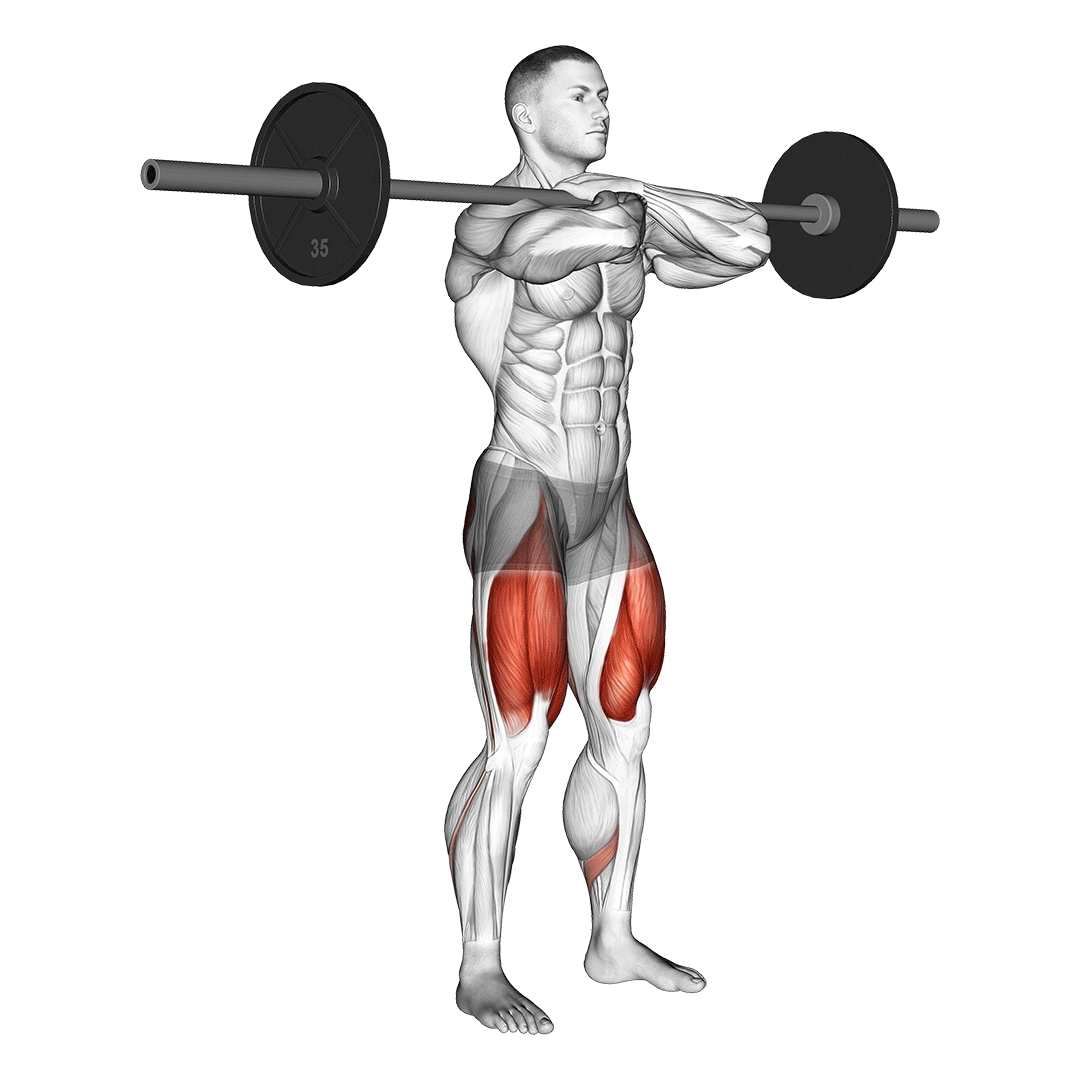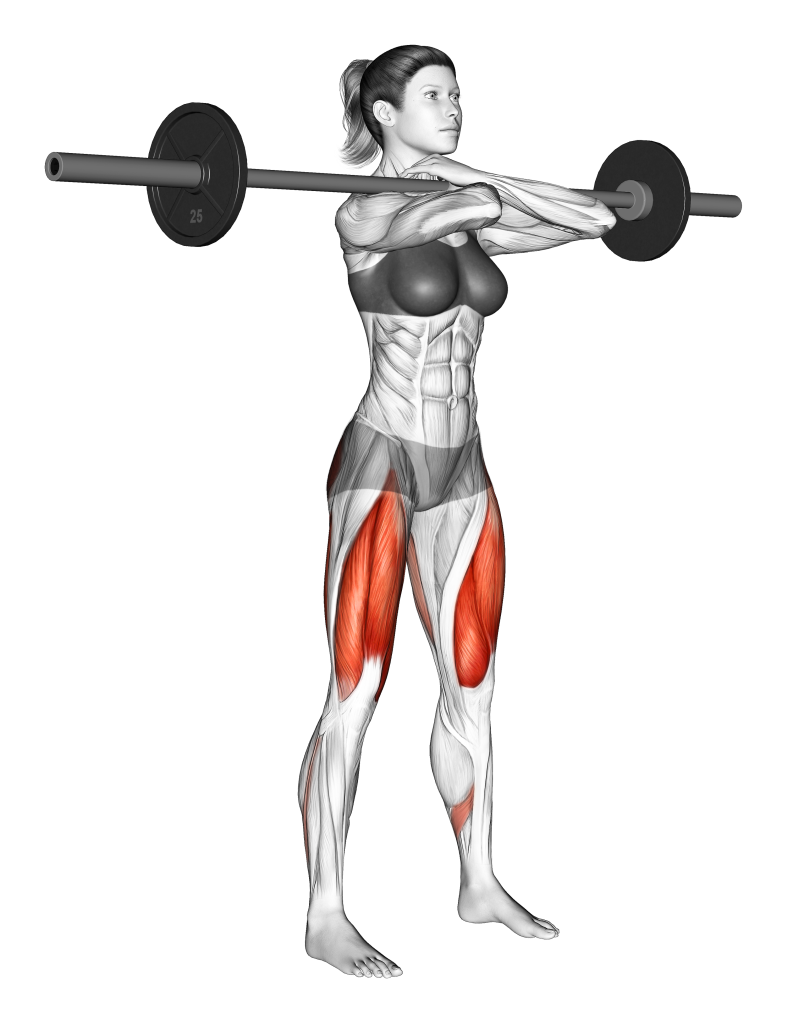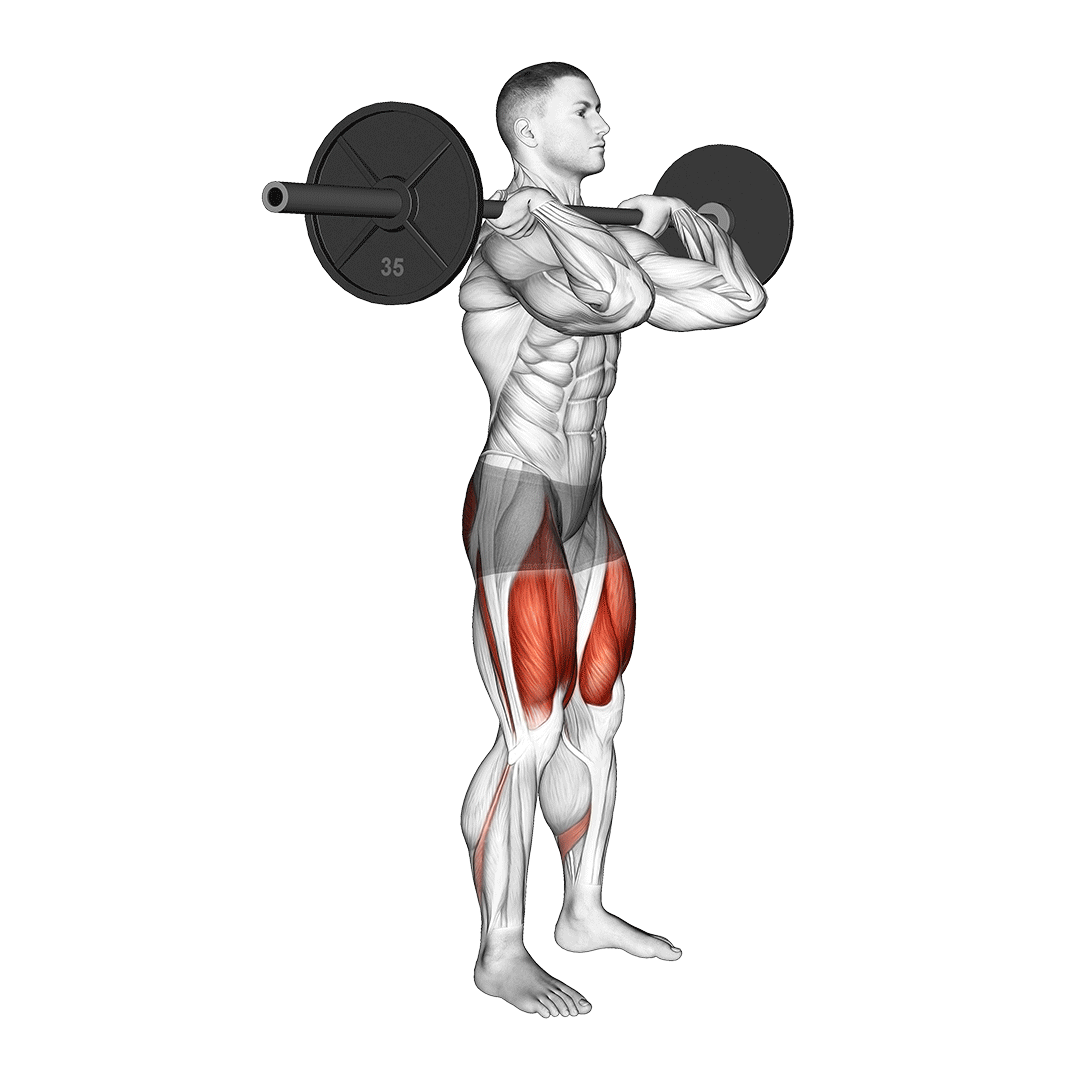Front Squat Shoulder Pain: Common Reasons Explained
The front squat is considered to be the more technical brother of the conventional back squat, sporting a greatly reduced equipment requirement and arguably superior quadriceps muscle development.
However, much like the latter exercise, the front squat also comes with its fair share of risks - the majority of which are related to poor form adherence, or simply performing the exercise with the wrong amount of weight.
Front squats can cause shoulder pain and bruising due to poor form or hand placement, but may also be indicative that too much weight has been loaded onto the bar.
If you begin to experience shoulder pain during a set of front squats, it is best to cease performing the set and to investigate the source of the pain.
What is the Front Squat?
The front squat is a compound lower body exercise with a closed kinetic chain and an intermediate level of complexity, most often performed as an accessory movement to the conventional squat or as a primary compound exercise within an athletic training program.

Unlike the conventional back squat, the front squat involves placing a barbell atop the chest shelf, where the hands are used to secure it as needed and the entire stance of the movement is geared towards greater quadriceps muscle recruitment.
What Role do the Shoulders Play in a Front Squat?
While the idea that the shoulders are involved in any way during a squat repetition may seem ridiculous, they in fact play quite an important role due to the position of the barbell during this particular squat variation.
Not only do the shoulders act as a rack with which the barbell may rest upon, but so too do they help in securing the barbell by contracting isometrically alongside the forearms, ensuring that the movement is as stable and controlled as possible.

Anatomically, there is not much to say in terms of dynamic movement of the shoulder structure, but the anterior or front-facing head of the deltoid muscles will nonetheless act as a cushion beneath the barbell, potentially being one cause for symptoms of pain.
Otherwise, any pain felt in the shoulders as a result of the front squat may be due to too much internal rotation from poor hand, elbow or barbell placement atop the chest shelf.
Common Mistakes that Cause Shoulder Pain From Front Squats
Outside of certain issues in training programming or preparatory work, the most likely cause of shoulder pain from front squats lies in the lifter’s execution of the movement.
Whether it be a poor initial stance or a breakdown in form adherence due to fatigue, the following are the most common mistakes known to cause shoulder pain from front squats.
Dropping the Elbows
The first part of the front squat stance to investigate is the angle of the elbow in relation to the torso.
If it is pointing downwards or flaring excessively to the side, the shoulder joint may be bearing more stress than it should - or is otherwise being drawn out of a stable position by the elbow.
Ideally, the elbows should remain at an angle that keeps them pointing forwards at the least, with the forearm relatively parallel and the upper arm set just slightly shoulder-width away from one another.
Hands Too Close Together
Setting the hands too close together beneath the barbell can cause the elbows and shoulders to rotate inwards so as to compensate, further reducing control over the barbell and increasing the risk of injury of the exercise.
While every lifter is different in terms of body proportions and mobility, a general guideline is to keep the fingers beneath the barbell at just a little wider than shoulder-width apart, with the wrists comfortably bent behind the fingers and the forearm parallel to the wrists at a neutral angle.

Placing the hands too close together can lead to excessive internal rotation of the shoulders or flaring elbows - both of which may present shoulder pain due to the disadvantageous position of each joint.
Barbell Resting Atop Collarbone
Though not necessarily atop the shoulders, placing the barbell too high atop the torso (such as atop the collarbone itself) can lead to pain and discomfort, especially if excessive weight is also being used.
Placing the barbell too high can lead to strain in the neck, pain in the shoulders, bruising of the collarbone and a stance that is bent too far forward as the exerciser tries to compensate for the discomfort they feel.
The ideal place to rest the barbell is atop the chest shelf, or beneath the collarbone so as to reduce any contact between hard bone tissue and the barbell.
Excessive Internal Rotation
During every repetition of the front squat, the shoulders are moved upwards and somewhat forward so as to provide a wider shelf on which the barbell can rest.
While this is entirely within correct form, allowing the shoulders to rotate inwards excessively can cause the rotator cuff and other internal structures of the shoulder to become strained, especially if the lifter has poor shoulder mobility.
It may be difficult to differentiate between too much internal rotation and an entirely normal shoulder position for the front squat, and as such it is important to have an outside observer watch the lifter perform a front squat set while keeping close attention to whether the shoulders are in a relatively neutral position or not.
Upper Back Collapsing
One of the more severe mistakes seen during the front squat is rounding of the upper back, which may appear quite close to internal shoulder rotation, though with the inclusion of the trapezius, rhomboids and the cervical portion of the spine as well.
Keeping the head facing forward and ensuring that the chest is pushed outwards are two of the main form cues utilized for avoiding this particular issue, though it may also be a case of poor scapular or shoulder mobility and as such can also require prerequisite mobility work be done prior to beginning the front squat set.
Other Factors Contributing to Front Squat Shoulder Pain
Poor Shoulder Mobility
If the lifter has examined their own form and found no issue, it is entirely possible that the shoulders themselves are the problem - especially in regards to mobility, of which must be regularly maintained for a proper front squat to be executed.

To correct, the exerciser should regularly perform a dynamic mobility routine that pays additional attention to the rotator cuff and other structures within the shoulder.
Movements like full arm circles, shoulder twists and behind-the-neck arm locks all target the shoulder quite effectively.
Excessive Weight Loaded
Even with proper form and correct workout programming, if the exerciser is lifting more than their body is physically capable of moving in a safe manner, then injuries are a very real risk.
Other signs of excessive weight being used are failures to adhere to correct form, reaching the point of muscular failure before completing the set or an RPE above 9 over the course of multiple consecutive workouts.
The majority of lifters will find that their working weight is nearly half that of their back squat working weight, and as such it is often a good idea to start with a very low amount of resistance and slowly work upwards if performing the front squat for the first time.
Barbell Knurling
Barbell knurling is a feature of barbells where the manufacturer will intentionally score the surface of the barbell so as to maximize friction between the exerciser’s hands and the bar itself.
This drastically reduces the risk of the barbell slipping from someone’s grip, and is seen as a positive among barbell brands.
Depending on the brand and material of the barbell however, the knurling or hatching may cause irritation of any bare skin that it touches. This is usually only a problem for recently purchased barbells, as regular usage is often enough to sufficiently wear down the knurling of the bar.
In cases of front squat shoulder pain caused by sharp barbell knurling, switching to a more well-used barbell (if available) is the best choice.
Otherwise, it is possible to use towels or pads temporarily - though the lifter should keep in mind that doing so can affect their form negatively, and it is best to find another solution instead.
Poor Scapula or Upper Back Mobility
Though less common than poor shoulder mobility, poor mobility of the shoulder blades or upper back can also lead to shoulder pain as the torso collapses forwards, creating a disadvantageous position for the rotator cuff and other parts of the shoulder.
Correcting poor mobility in these areas is much the same as correcting poor shoulder mobility; regularly performing mobility drills that involve dynamic movements specifically targeted towards the upper back and scapula.
Movements like the scapular circuit stretch, elbow circles and neck extension/flexion are all effective at targeting individual parts of the upper back.
When to See a Doctor for Your Front Squat Shoulder Pain
If your shoulder pain is accompanied by symptoms like tingling, numbness or a loss of range of motion of the shoulders - it may be time to seek out the advice of a medical professional.
Note that bruising of the shoulders may occur, and as such discoloration of the affected area is not necessarily a sign that any serious injury has been incurred, only that it is a good idea to cease performing the front squat and to investigate the cause of the bruising.
In Conclusion
Remember that injuries (however minor) take some time to heal, and that a period out of the gym may be in order.
Furthermore, seeking out the advice of a physician - even if you do not believe any serious injury has occurred - can greatly aid in speeding up the recovery process.
Cease performing the front squat and let your shoulders heal. For all you know, you could come back stronger than you were previously.
References
1. Bird, Stephen & Casey, Sean. (2012). Exploring the Front Squat. Strength and Conditioning Journal. 34. 27-33. 10.1519/SSC.0b013e3182441b7d.
2. Bautista D, Durke D, Cotter JA, Escobar KA, Schick EE. A Comparison of Muscle Activation Among the Front Squat, Overhead Squat, Back Extension and Plank. Int J Exerc Sci. 2020 May 1;13(1):714-722. PMID: 32509107; PMCID: PMC7241624.
